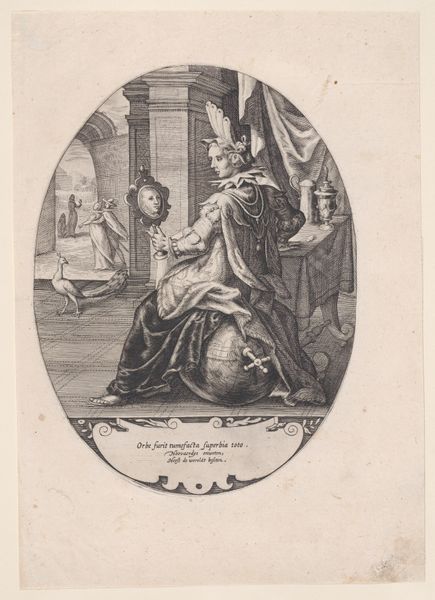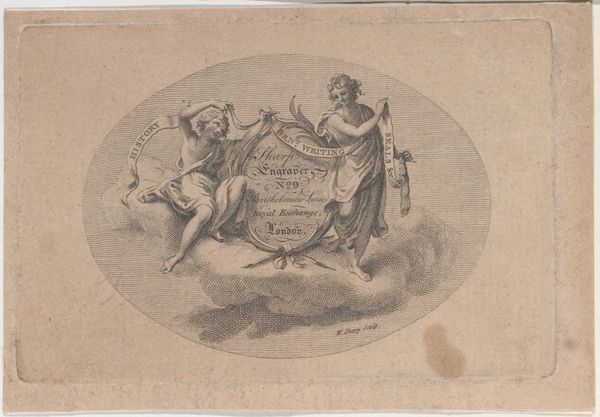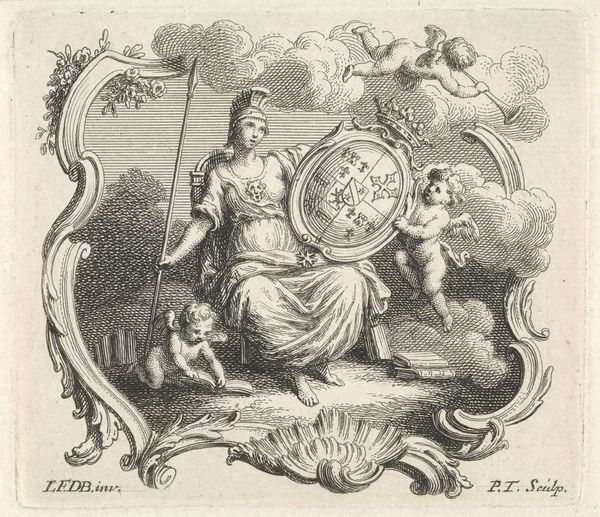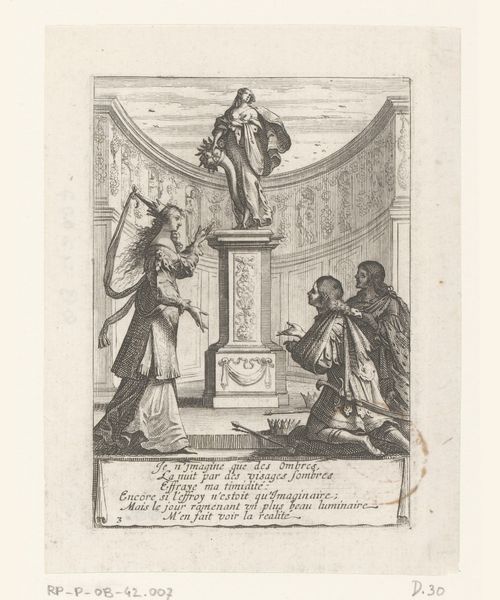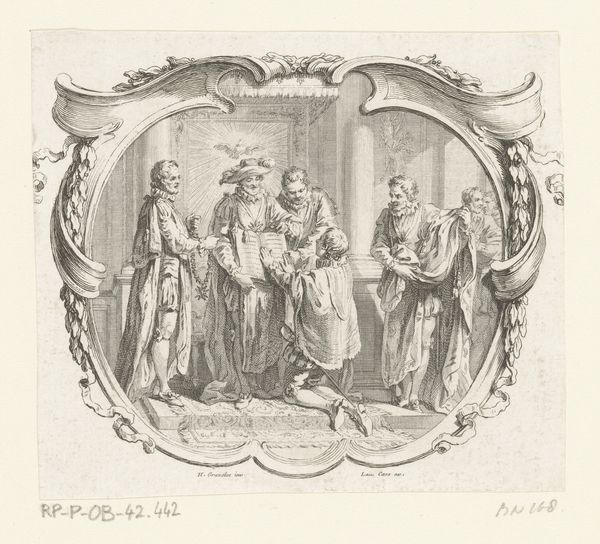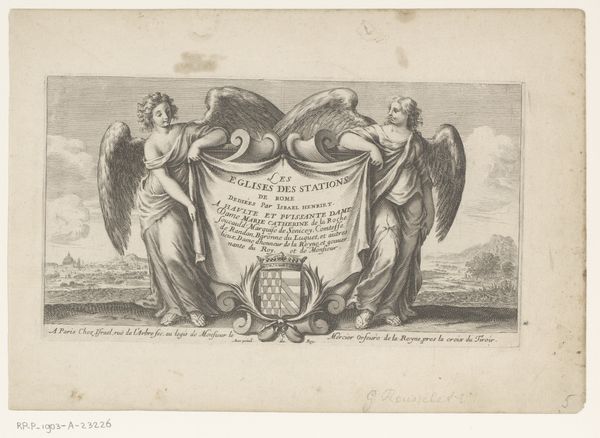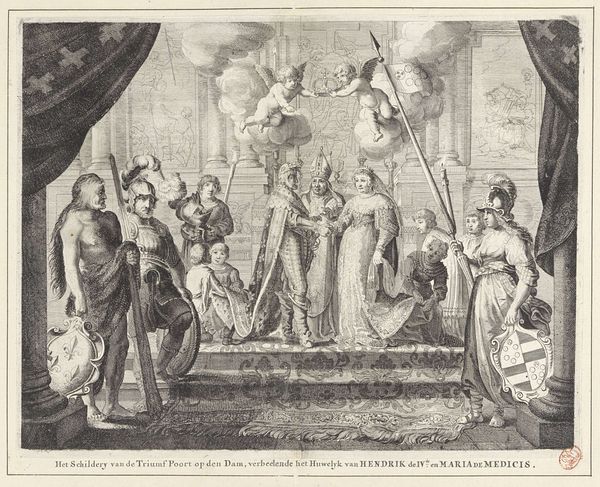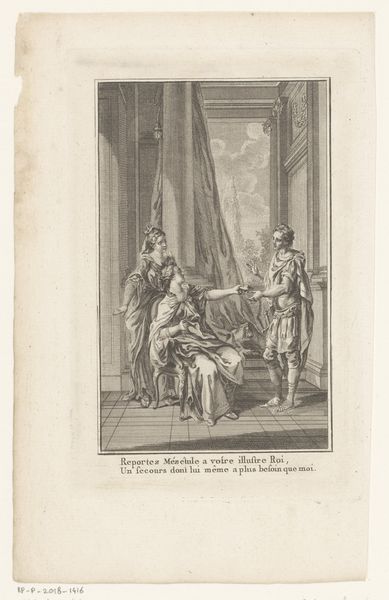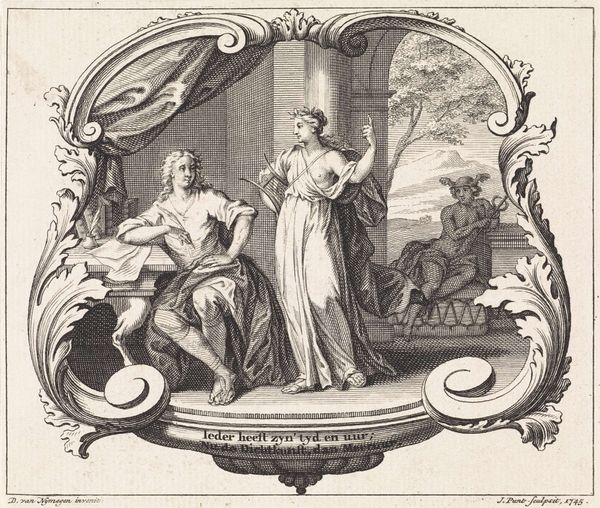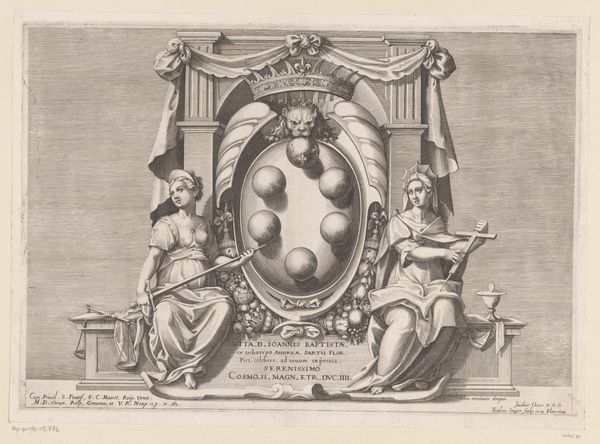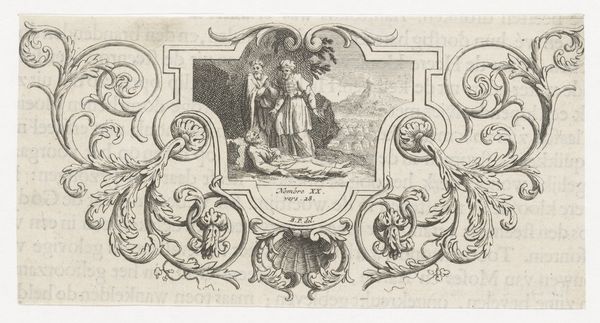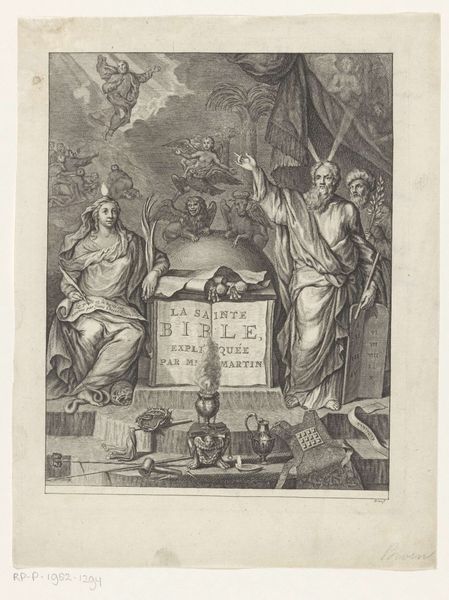
#
light pencil work
#
ink drawing
# print
#
pen sketch
#
pencil sketch
#
personal sketchbook
#
ink drawing experimentation
#
pen-ink sketch
#
sketchbook drawing
#
pencil work
#
sketchbook art
Dimensions: 120 mm (height) x 163 mm (width) (plademaal)
Curator: This is a print from 1761 by Jonas Haas entitled "Christian VII som kronprins", or "Christian VII as Crown Prince". It resides here at the SMK, the Statens Museum for Kunst. Editor: Immediately, I’m struck by its graphic quality – the dense lines creating dramatic contrasts. It’s a complex composition for a relatively small print. The allegory is… intense, let's say. Curator: Absolutely. Prints like this played a significant role in shaping public perception of the monarchy. Consider the setting: classical figures framing Christian VII in an oval portrait. It's about presenting the image of an educated and noble future leader, linking him to ideals of the Enlightenment and notions of the divine right of Kings. Editor: The craftsmanship intrigues me. Look at the layering of lines to build volume, especially on the figure on the bottom left with the scythe. This isn't just a quick sketch; someone put a great deal of labor into this engraving. It suggests a dedication, not only to craft, but to disseminating a particular image of power. I would even suggest that print was created as some sort of "publicity" for Christian VII. Curator: A precise observation! It functioned almost like early political advertising. Also, consider the intended audience. Prints were reproducible and more affordable than paintings. They could circulate among a broader segment of society. These images visually reinforced the social and political hierarchy. The distribution networks—who was commissioning, producing, and disseminating these images—offer insights into the mechanisms of royal power. Editor: Right, and even the medium matters. The engraving process itself, with its exacting labour, reinforces the image of precision and order. What ink was used and where were materials sourced? The deliberate artistic skill and the meticulous work add to its impact, underscoring ideas of permanence, and legitimate rulership. It is not merely image but a piece of evidence that supports historical ideas. Curator: Indeed. It's a fascinating window into the political climate and the image construction surrounding the Danish monarchy in the 18th century. The classical figures weren't arbitrary additions, rather cultural references that were instantly readable to an educated elite and gave a sense of gravitas. Editor: It is always incredible how artistic approaches shape history and ideas, from process to image and even after, that labor keeps speaking from the past.
Comments
No comments
Be the first to comment and join the conversation on the ultimate creative platform.
